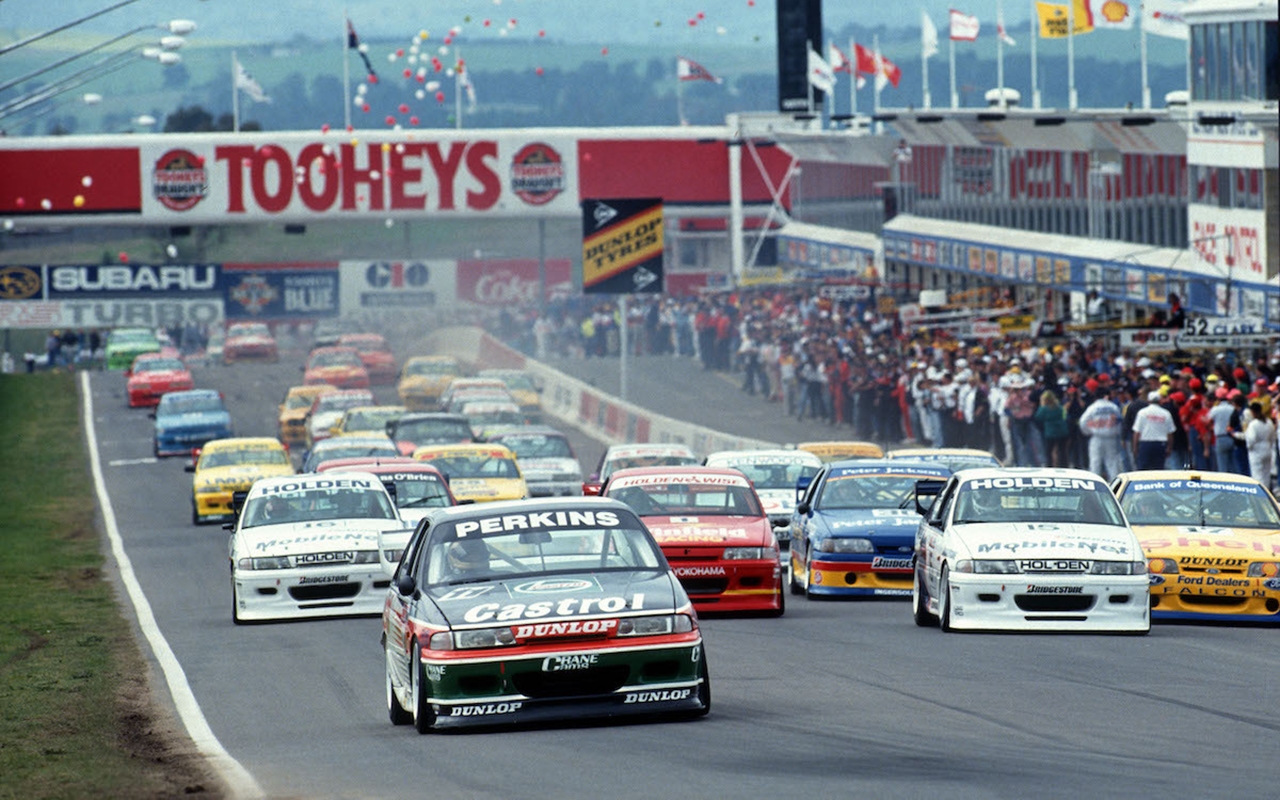

First Bathurst of V8 era was in 1993
Perkins defeated Skaife in Commodore victory shootout
The last win by a Holden V8 engine at Mount Panorama
Larry Perkins is God.
So read a prominent banner under the podium at the 1993 Bathurst 1000, where the chants of ‘Larry, Larry, Larry’ drowned out Garry Wilkinson’s attempts to interview the top finishers.
The fan euphoria was a stark contrast to the scenes of 12 months earlier, where Jim Richards called the crowd a ‘pack of arseholes’ amid boos and flying beer cans after winning in a Nissan GT-R.
If the Australian motorsport fraternity needed any further sign that replacing the international Group A rules with a home-grown V8 formula had been a raging success, then this was surely it.
A need to move away from Group A had been clear as far back as 1991, when the four-wheel-drive GT-R dominated amid dwindling fields and interest, and the ruleset was being abandoned globally.
While adopting a Falcon versus Commodore V8 battle was an obvious winner in hindsight, the direction was only set after extensive deliberations by the Confederation of Australian Motor Sport.
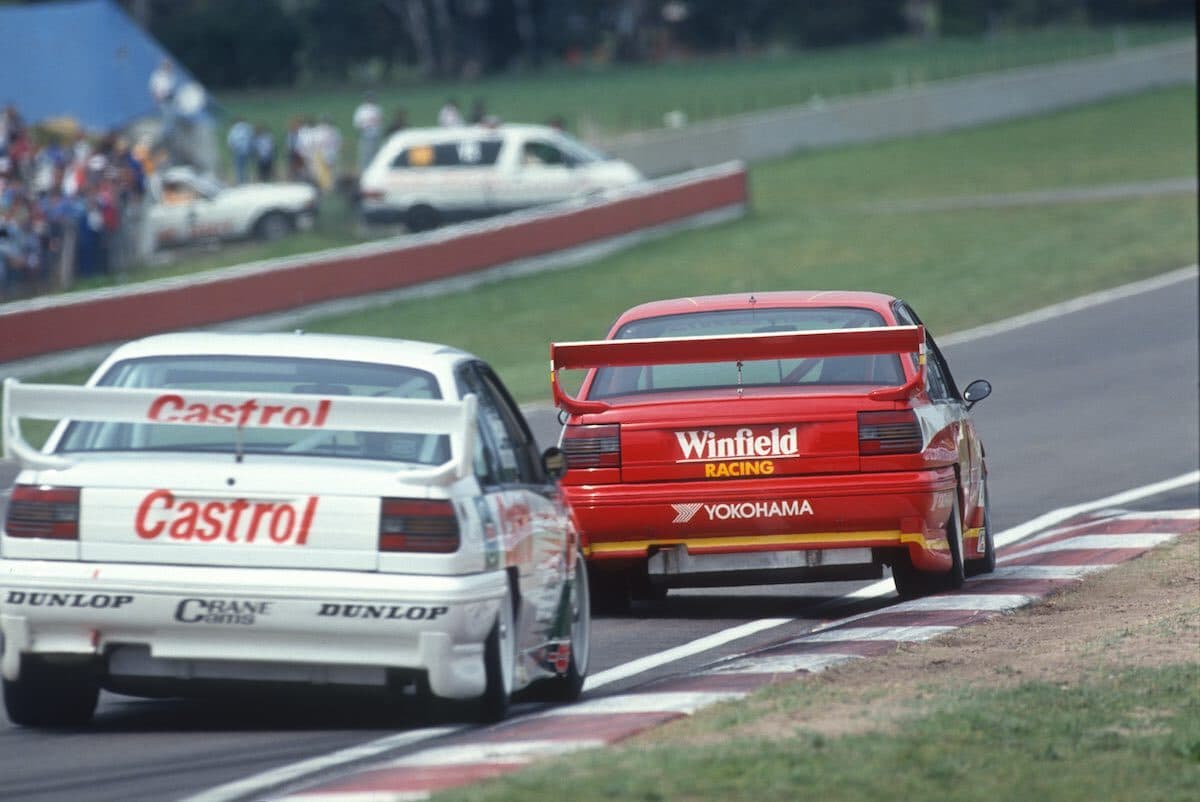
Ford, which had re-introduced a V8 Falcon with its EB model, Holden, sponsor Shell and broadcaster Seven eventually forced CAMS’ hand, pushing through the five-litre V8 formula in mid-1992.
BMW’s existing 2.5-litre M3s were given a 12-month stay of execution for 1993 but faced a tough task to be competitive against the V8s, while a two-litre class remained.
The first of the new-era V8s debuted in their own class during the 1992 endurance races; a Falcon fielded by Glenn Seton, and Commodores from the Holden Racing Team and Advantage International.
Delays in finalising the regulations meant Dick Johnson Racing’s first Falcon never raced, as it ended up too far away from the final specifications to be eligible.
The 1993 rules ended up largely based on how the Group A Commodores had previously run, albeit with new engines, uprated rear-suspension, and the addition of big-wing body kits.
Ford and Holden homologated their wing packages based on dimension restrictions, but there was no direct parity testing, and the latter was given a mid-season upgrade in a bid to even the playing field.
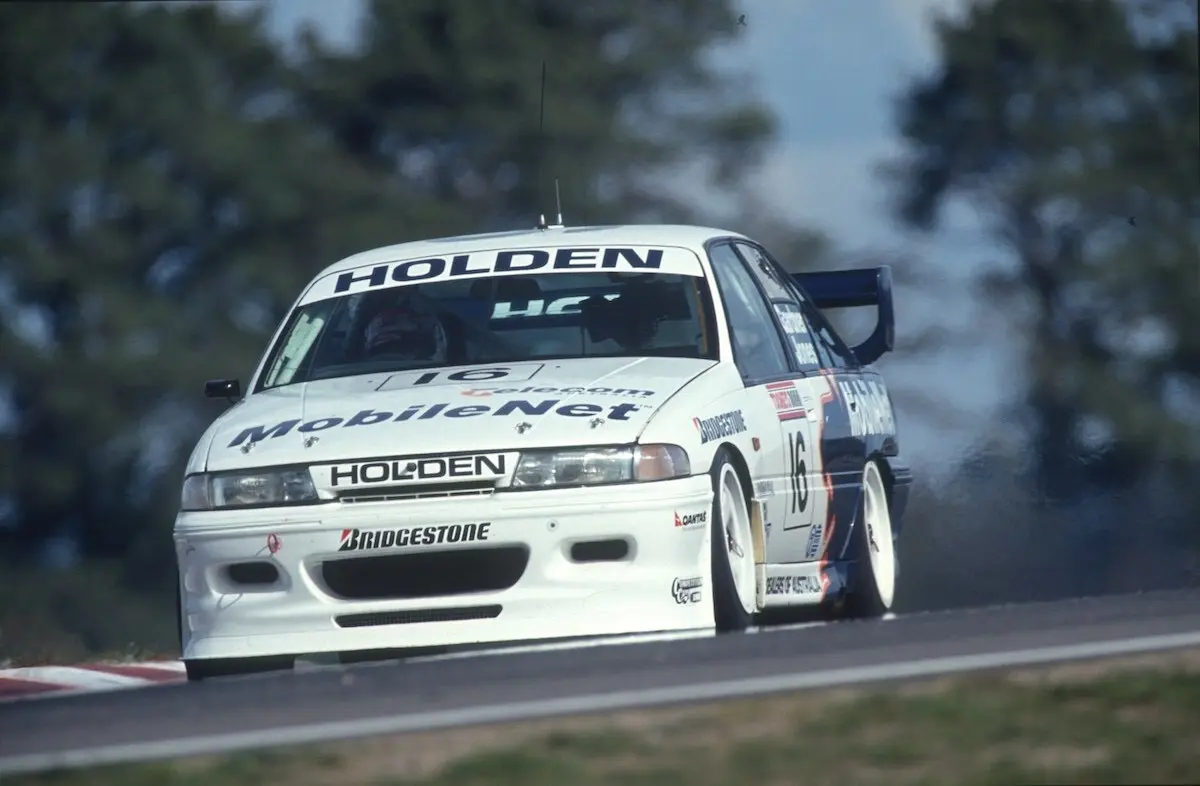
Falcons fielded by the Seton and Johnson teams had dominated the early going, and the former squad won the Triple Challenge, the Australian Touring Car Championship and the Sandown 500.
October’s Bathurst 1000 produced one of the most thrilling two-car battles in the history of the Great Race, but it was not the Ford versus Holden fight it had billed as.
Instead, it was fought out between the Perkins Engineering Commodore of Larry Perkins and Gregg Hansford and the Gibson Motorsport example of Richards and Mark Skaife.
They may have been racing the same brand, but there was otherwise little in common between Gibson’s slick, ex-Nissan team and that of ‘Prince of the Privateers’ Perkins, and their equipment.
Gibson’s move to Commodores included adopting the Chevrolet V8 engine that had been homologated by Holden for the new era to match the US-sourced Ford equivalent.
Perkins, however, had significant stock of the existing Holden V8 for himself and his band of customers, and – not receiving money from the manufacturer – had no interest in the Chev.
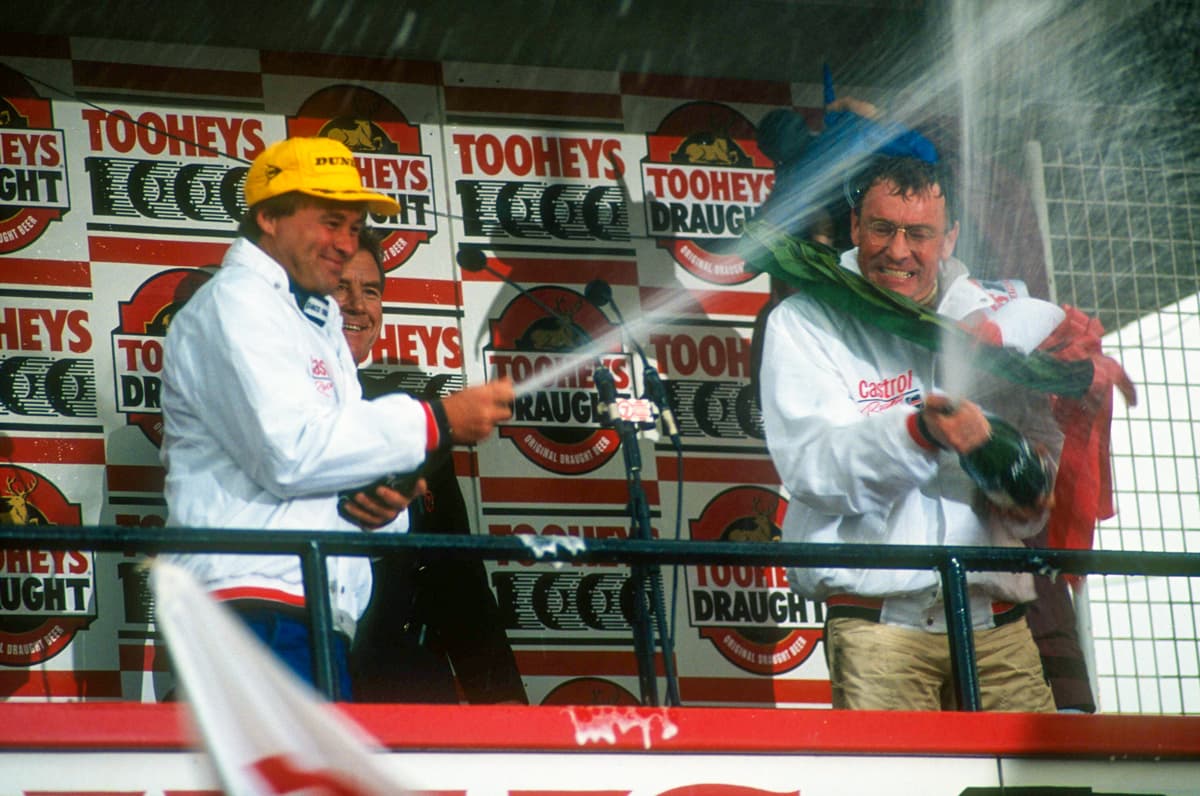
Keen to prove a point to those who decided the Chev V8 was necessary, Perkins worked with the Holden engine foundry to homologate key changes to the block and head of the older motor.
Perkins was not a factor in the ATCC but headed to Bathurst confident in his package, and subsequently topped Friday qualifying and scored pole in Saturday’s Top 10 Shootout.
The Gibson car had much of the front-running during the race, but ultimately needed five fuels stops and two brake pad changes compared to four and one respectively for Perkins.
Gibson saw part-timer Hansford as Perkins’ weak-link and double-stinted Skaife to try and break the co-driver mid-race, but an ill-timed Safety Car period scuppered that plan.
A brief rain-shower as Perkins made his final stop threw a late curveball, but he wisely stuck with slicks and, as the track again dried, powered on to victory by 10.5 seconds.
“It was tremendously satisfying,” Perkins recently reflected of the 1993 race, which was his fourth Bathurst win and the first with his Castrol team that triumphed again in ’95 and ’97.
“We did it tough as a privateer, a genuine privateer.
“That feeling of getting the chequered flag, knowing you’d won it from the front, knowing you’d won it on sheer preparation and speed was fantastic.”
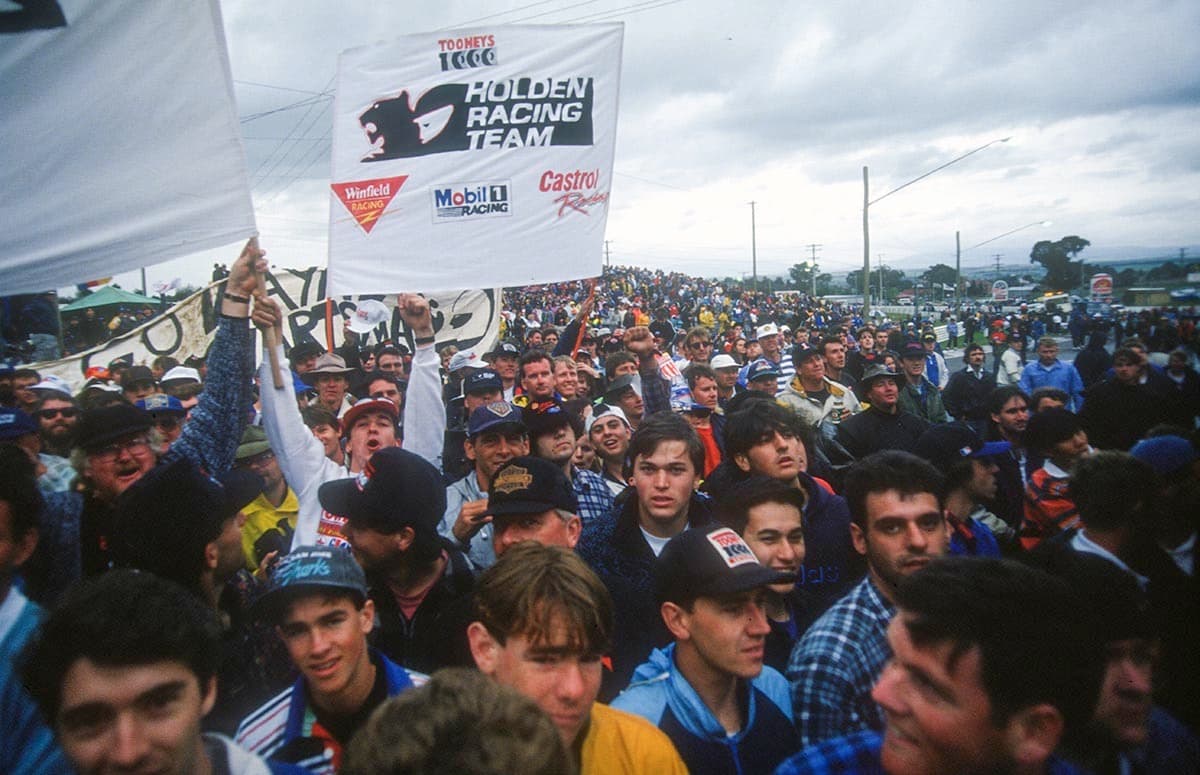
The HRT Commodore of Wayne Gardner and Brad Jones completed the podium after Win Percy crashed the team’s sister car, which he shared with Tomas Mezera.
It was a lacklustre day for the Falcons, which were not on the pace of the leading Commodores and struck various issues.
Seton and Johnson both spun in separate incidents during the early stages, and later retired due to a driveline failure and a clash with a slower car respectively.
Ford would have its revenge on the Mountain in 1994 through Johnson’s team, as the popularity of the Falcon versus Commodore formula that became V8 Supercars continued to grow.
A rule change forced Perkins to adopt the Chevrolet engine in 1994, leaving his efforts of the previous October as the last-ever Bathurst win for a Holden V8-powered car.
The 1993 race-winning Commodore has been restored by Perking Engineering and will be at this year’s Repco Bathurst 1000 as part of the 60th year celebrations.
Larry’s son Jack was behind the restoration and will field his Super2 Series Commodore in a 1993 throwback livery, before teaming up with Will Brown at Erebus Motorsport for the Great Race.